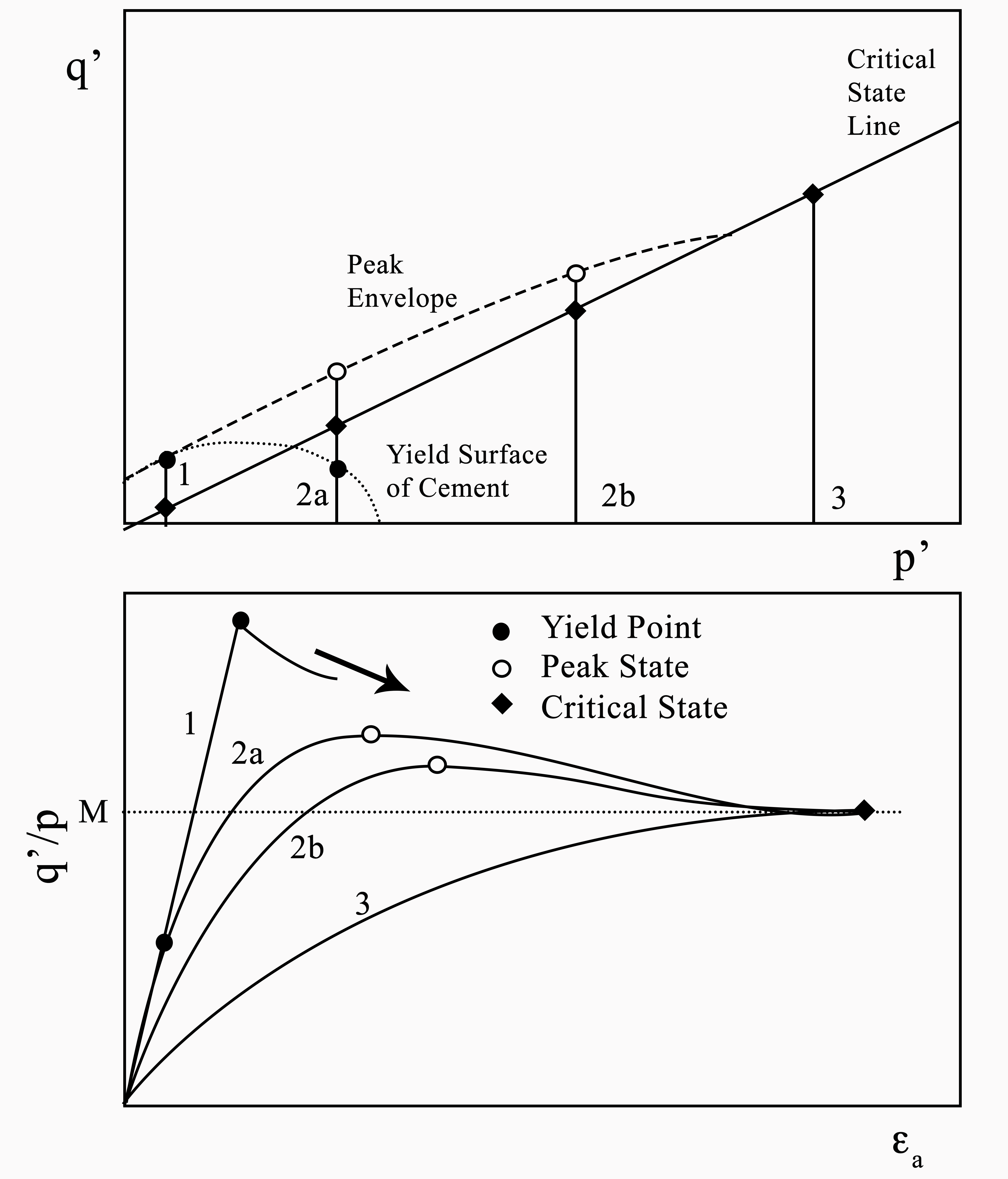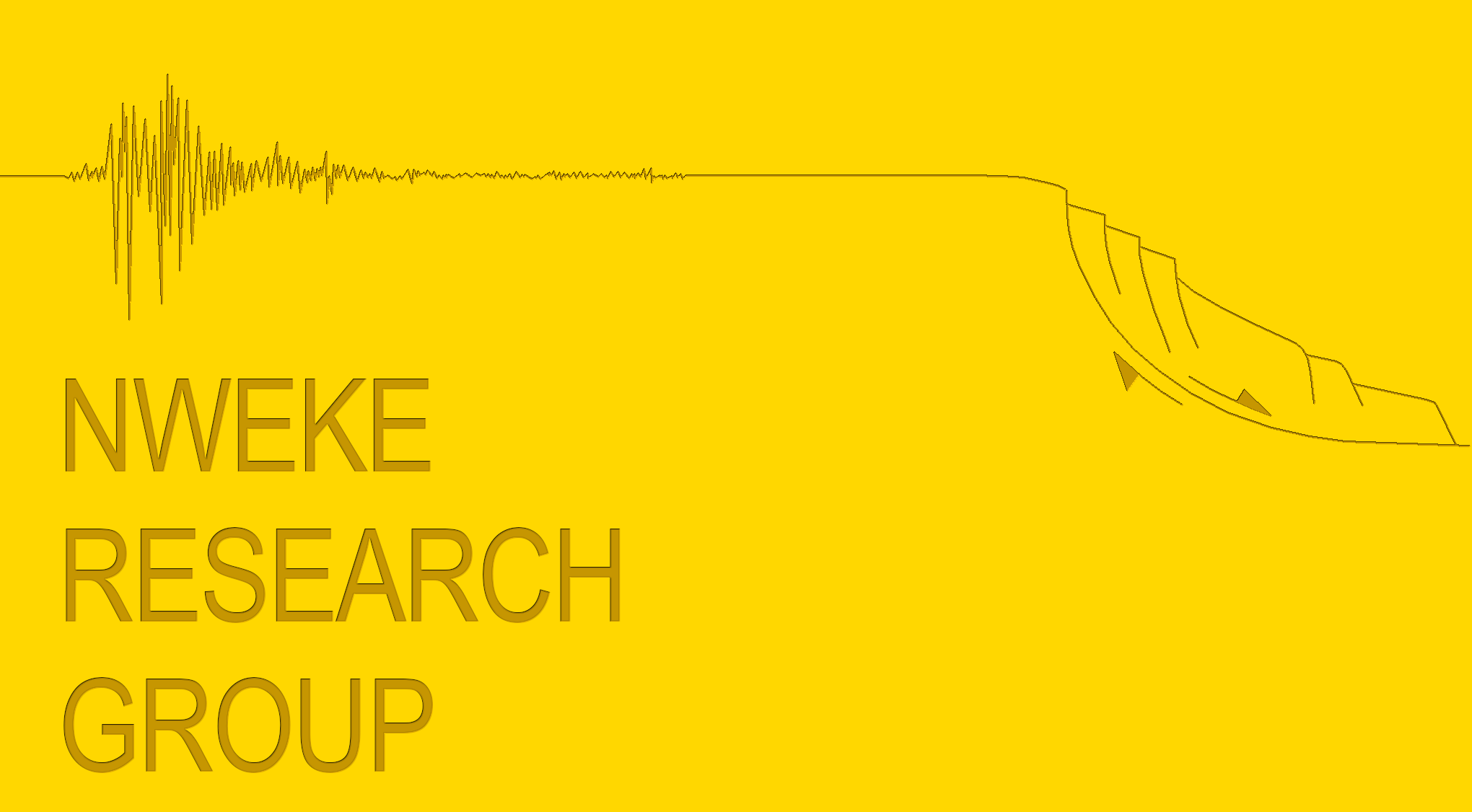
Schematic of yield behavior of cemented soils with varying constant confinement loading from Cuccovillo and Coop 1999. Top panel shows the stress path (in deviatoric, q' and mean effective space, p') for cemented soil specimens each at different levels of confinement. Here, 1 - low confining pressure, 2 - low to medium confining pressure, 3 - medium to high confining pressure, 4 - high confining pressures. Bottom panel shows the normalized stress-strain behavior of the aforementioned soil specimens.
Secondary hazards from earthquakes such as ground failures (liquefaction, lateral spreading, differential settlement, and more) are often the leading cause of infrastructure damage and devastation during and after a seismic event. This is primarily due to unsuitable subsurface conditions for foundations, lifelines, and other infrastructure systems. The popular mitigation approach is the injection or mixing of Portland cement into the subsurface material as a means to improve its mechanical properties (strength and stiffness). This is effective but often not efficient, as the energy and resources needed to create and implement these methods are costly, unsustainable, and environmentally taxing.
However, bio-cementation provides an alternative solution that is potentially as effective, less costly, and significantly more sustainable!
Bio-cementation is a ground-improvement process that mimics the geologic diagenesis process of calcification. It is expediated through the use of natural bacteria in-situ by exciting their urease enzymes. The urease enzymes initiate a chemical reaction (ureolysis) that induces supersaturated conditions, leading to the precipitation of calcium carbonate which binds sand or silt grains together at their contacts.
Here at the N.E.S.T., we aim to further understand the mechanisms (deformation response under loading) of various bio-cemented soils (sands and silts) by investigating their heterogeneity, material properties, and behavior under dynamic loading through laboratory testing and constitutive and numerical modeling.

